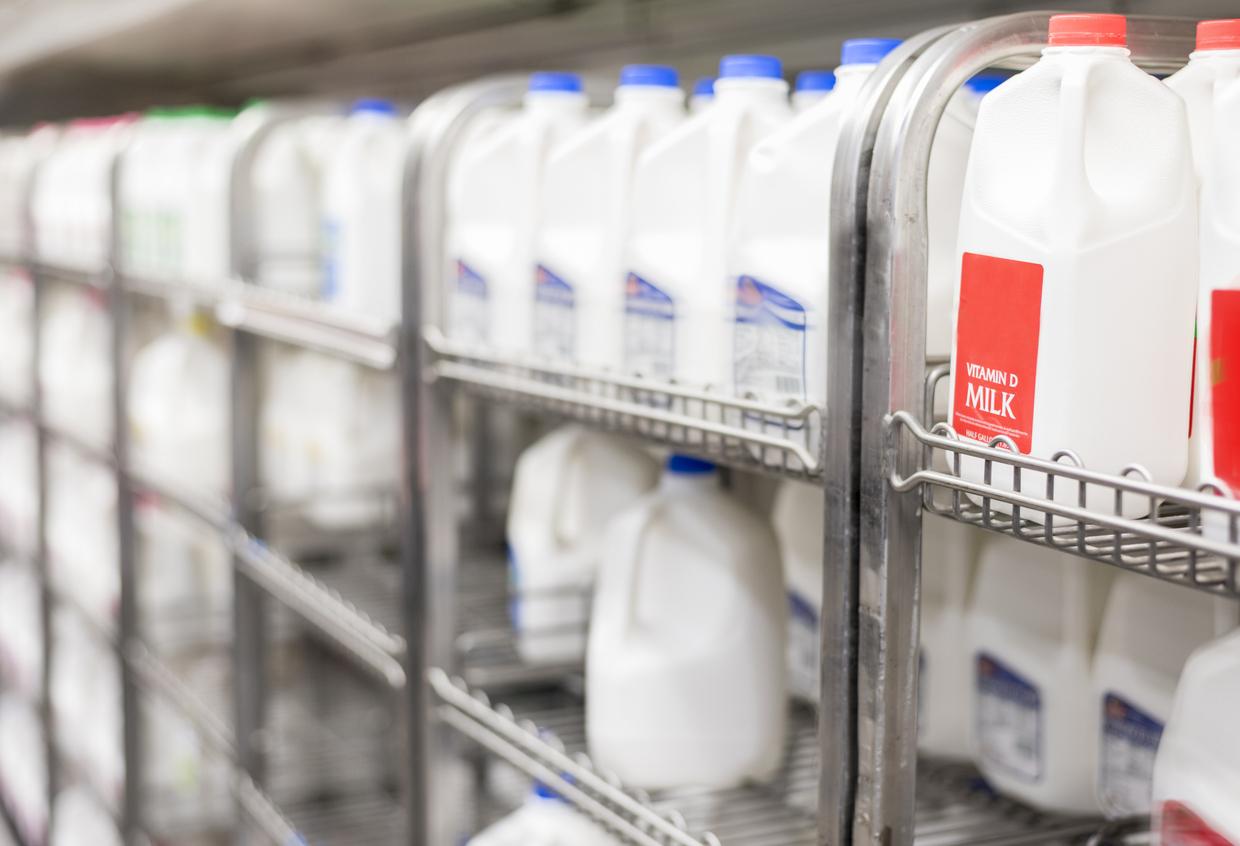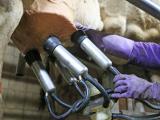A senior official from the US Food and Drug Administration (FDA) said today that its nationwide survey of retail milk has found remnants of H5N1 avian flu viruses in one in five samples, with the highest concentrations in regions where outbreaks in dairy cattle have been reported.
Donald Prater, DVM, acting director of the FDA Center for Food Safety and Applied Nutrition (CFSAN), shared the new findings with state health officials who took part in a scientific symposium on H5N1 hosted by the Association of State and Territorial Health Officials (ASTHO). The results come in the wake of earlier findings this week from more limited FDA sampling, along with similar findings from a smaller set of samples tested by a lab that's part of the National Institute of Allergy and Infectious Diseases Centers of Excellence for Influenza Research and Response (CEIRR) Network.
At today's ASTHO briefing, state health officials heard the latest investigation and research updates from federal health officials and had the opportunity to ask their own questions, everything from virus shedding in cow manure to pandemic preparedness.
FDA's long list of research questions
Prater reiterated that the FDA hasn't changed its assessment that the nation's milk supply remains safe. So far, early work on milk samples that were positive for H5N1 fragments haven't found any viable (potentially infectious) virus.
He said, however, that the FDA still has a long list of data gaps to fill, including identifying the risk of infection to humans via oral consumption and validating that existing pasteurization methods can inactivate H5N1.
Other data gaps include how long the virus survives in raw milk and the infectious dose of viruses. Though a major concern is retail milk, Prater also said the FDA needs to see if contamination is occurring in other products, such as cheese made from raw milk.
USDA continues to probe farm transmission patterns
Rosemary Sifford, DVM, deputy administrator for veterinary services and chief veterinarian with the US Department of Agriculture (USDA) Animal and Plant Health Inspection Service (APHIS) said the agency has now shared 260 genetic sequences with public databases, up from 239 earlier this week. Of those, only 1 had a mutation linked to mammalian adaptation.
She also said the B3.13 genome circulating in cattle was first seen in poultry in the middle of March in a Texas flock at a time when the virus was cropping up in some of the state's dairy farms. Sifford said investigators continue to look at how the virus is moving on farms and how it transmits among cattle.
Scientists are looking for the virus in other species, including feral pigs, and regular influenza surveillance is monitoring the situation in commercial pigs. Sifford said efforts are under way to gauge how long infected cows shed the virus and if shedding patterns are any different in asymptomatic animals.
When asked about on-farm transmission, she said scientists haven't observed significant shedding in cow feces. Meanwhile, sampling from the USDA's Food Safety and Inspection Service (FSIS) found the highest concentrations in milk and mammary tissue.
CDC notes cat infections, weighs risks
Centers for Disease Control and Prevention (CDC) officials shared more details from their epidemiologic investigations, including virus findings in other animals on affected dairy farms. Sonja Olsen, PhD, associate director for preparedness and response with the CDC's Influenza Division, said there were 6 H5N1 positive tests in cats from three states: 3 in Texas, 2 in New Mexico, and 1 in Ohio.
Also, there were 5 H5N1 detections in wild birds on the farms.
She said CDC a key question is the infection risk from exposure to milk and whether certain conditions, such as aerosolization, pose a higher risk.
Vivien Duggan, PhD, who heads the CDC's Influenza Division, said the interagency Flu Risk Management group, which formed 15 years ago, is meeting now to discuss prepandemic vaccines and diagnostics.
On the research front, the CDC is looking for any changes in the virus that would hamper the ability to use countermeasures, such as antiviral drugs and vaccines.
A key tool that the CDC uses to evaluate and prioritize resources is the Influenza Risk Assessment Tool (IRAT), in which its experts grade the virus using 10 data criteria. Duggan said the CDC is still gathering some data and that it will take some time to evaluate the virus and come up with a risk score. In its last assessment in July 2023, the agency scored the H5N1 clade 2.3.4.4b virus from a Spanish mink farm outbreak as slightly higher for some elements than a 2022 virus from the same clade from wild birds.
Latest on vaccines, other countermeasures
So far, research results have been promising for antiviral susceptibility. And for the two candidate vaccine viruses against the H5N1 2.3.4.4b clade, experiments using ferret antisera show good cross-reaction against the outbreak strain, she said.
When state officials asked what would trigger ramped up H5N1 vaccine production, Duggan said officials are watching for certain cues, such as change in mammalian transmission, better adaptation to human-to-human spread, and clusters of cases. "There's no formula, but we're all on the watch."
Health officials also heard from government countermeasure experts, who said they don't foresee any issues with the antiviral supply chain.
State health officials had several questions about where things stand with a candidate vaccine. David Boucher, PhD, director of infectious disease preparedness and response at the Department of Health and Human Services Administration for Strategic Preparedness, said there is a limited quantity of prefilled syringes and vials that are used for clinical trials, for example. He added that health officials are already looking at regulatory pathways to use the vaccine more widely, if needed.
He said the first wave of production, if needed, could provide several hundreds of thousands of vaccine doses, and the second tranche could amount to 10 million doses. "Any pivot from that would require additional resources," Boucher said. "If we need to pull any of those levers, we're willing to do so."
Partnering with established seasonal flu vaccine producers has the benefit of a licensed platform in place that can be easily adapted to include an H5N1 vaccine virus, but he acknowledged that a downside would be a potential disruption in seasonal flu vaccine production. "There are a lot of variables that go into making that decision."
Two safety and immunogenicity studies are already under way on candidate H5N1 vaccines, Boucher told the group.





















